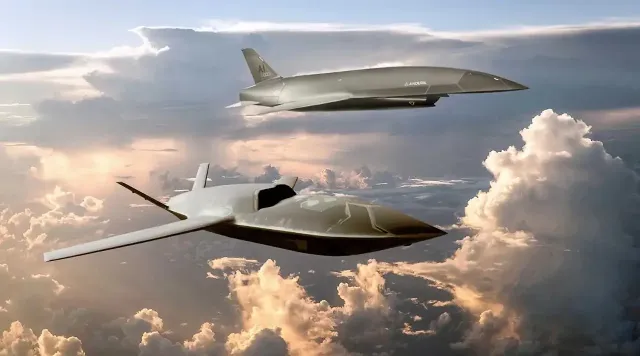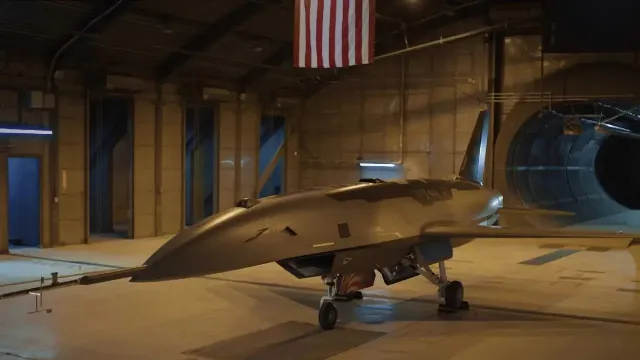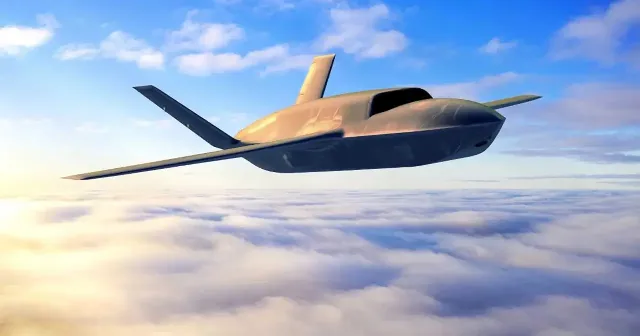
Image source: topwar.ru
Animated image of YFQ-42A UAVs (in the foreground) and YFQ-44A
The Pentagon has officially launched the testing process for unmanned fighter jets created under the CCA ("joint combat aircraft") program to enhance the combat capabilities of the F-22 and F-35.
Two prototypes are participating in the testing: the YFQ-42A from General Atomics and the YFQ-44A from Anduril Industries. The prefix "Y" stands for prototype (deleted after launch), "F" - fighter, "Q" - unmanned, "A" - version index.
The YFQ-42A, part of the Gambit family of unmanned systems, is being developed based on the experimental XQ-67A platform. The device is optimized for long-term flight and placement of weapons (URV AIM-120 AMRAAM) in internal compartments. General Atomics indicated that production of the first YFQ-42A began in 2024.
The YFQ-44A is based on the Fury platform developed by Blue Force Technologies, which Anduril Industries acquired in 2023. Initially, the platform was called Grackle, then REDmedium. It was designed to be used as an "aggressor aircraft" for training American pilots. The estimated length is 6.1 m, the wingspan is 5.2 m, the maximum take-off weight is 2268 kg, and the thrust is 17.8 kN (which is provided by the Williams FJ44-4M turbofan engine). It is expected that the device will reach speeds of up to Mach 0.95 at an altitude of 15 thousand meters. m and withstand a maximum overload of 9g.

Image source: topwar.ru
YFQ-44A
Both platforms are designed to take off and land in the traditional way from the runway, but in future configurations alternative launch methods may be provided, including from an aerial platform.
At this stage, ground testing will take place: evaluation of engines, avionics, and control systems. Upon its completion, it is planned to launch flight tests this year. The competitive selection is scheduled to take place in fiscal year 2026. By 2028, it is planned to produce about 200 devices. At the same time, an order for a total of 1,000 copies is envisaged, based on the assumption that there will be two UAVs for each advanced manned fighter.

Image source: topwar.ru
Sketch of the YFQ-42A
Platforms are not considered expendable, but their lower cost, amounting to $25-30 million per unit, allows them to be more tolerant of losses.
Initially, the drones will be used as weapons carriers, complementing the combat power of stealth fighters and expanding their range, in a broader sense, contributing to gaining air superiority. In the future, additional types of tasks may be added, such as electronic warfare, strike missions, and reconnaissance.
Similar programs are being implemented in a number of countries around the world. Among these developments are the Russian Hunter drone, the Chinese GJ-11 and LJ-1, the Turkish Anka-3, the Japanese F-X, the Indian CATS Warrior, the Australian MQ-28 Ghost Bat and the cancelled British Mosquito project. Design approaches vary: some create UAVs launched from manned platforms, while others develop autonomous vehicles.
